Every building has a roof that needs maintenance. All roofs need repairs, whether flashing, drains, skylights, or chimneys that cause leaks.
Turbo Poly Seal is a roof leak repair sealant designed to address all leak problems. Its unique composition consists of polyurethane and bituminous resins. Turbo Poly Seal will adhere to almost any surface. The only material it will not bond to is EPDM Rubber.
Turbo Poly Seal is easy to use. The kit comes with resin and polyester fleece. Turbo Poly Seal is applied with a brush to a dust-free surface, and then the fleece is embedded in the polyurethane, with another coat of resin brushed over it.
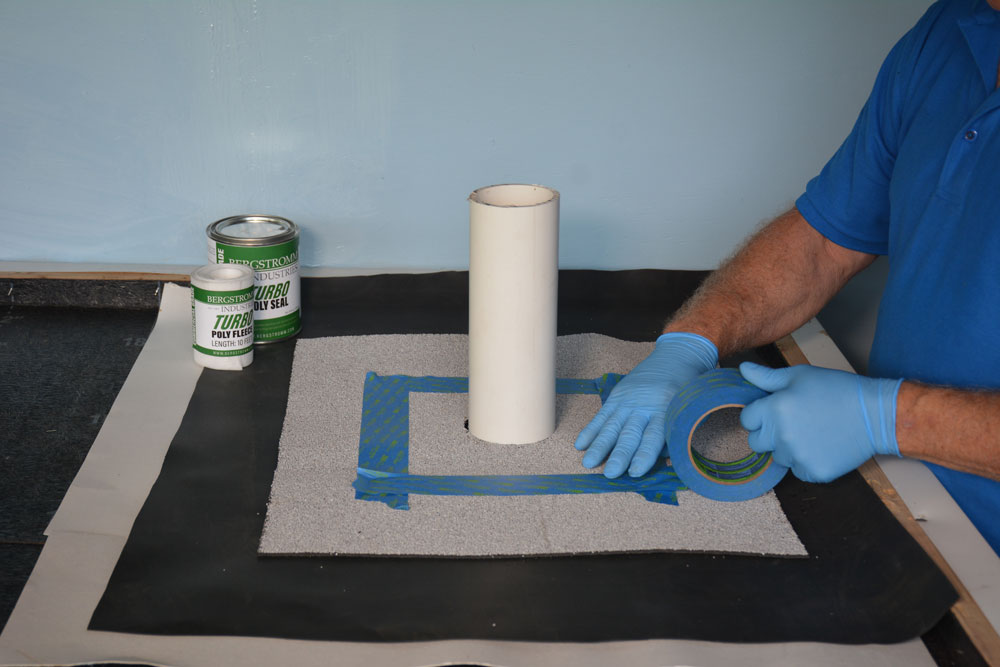
Turbo Poly Seal
Introducing Turbo Poly Seal – the ultimate roof leak repair sealant. Engineered with a blend of polyurethane and bituminous resins, it tackles all types of roof leaks. Turbo Poly Seal boasts exceptional adhesive properties, adhering to almost any surface except EPDM rubber. Its user-friendly application includes brushing the resin onto a clean surface, embedding the included polyester fleece, and applying an additional coat of resin. Say goodbye to roof leaks with Turbo Poly Seal.
Metal Roof Leak Repair
Turbo Poly Seal is the ideal solution for metal roof leak repair. This high-quality roof leak repair sealant is specifically formulated to tackle all types of leaks, from flashing to drains, skylights, and chimneys. Its unique composition, consisting of polyurethane and bituminous resins, ensures exceptional adhesion to various surfaces. It is important to note that Turbo Poly Seal effectively connects almost any material except EPDM Rubber. Applying the Turbo Poly Seal is a breeze, and the kit provides resin and polyester fleece. Brush the sealant onto a dust-free surface, embed the fleece into the polyurethane, and apply another coat of resin to complete the repair.
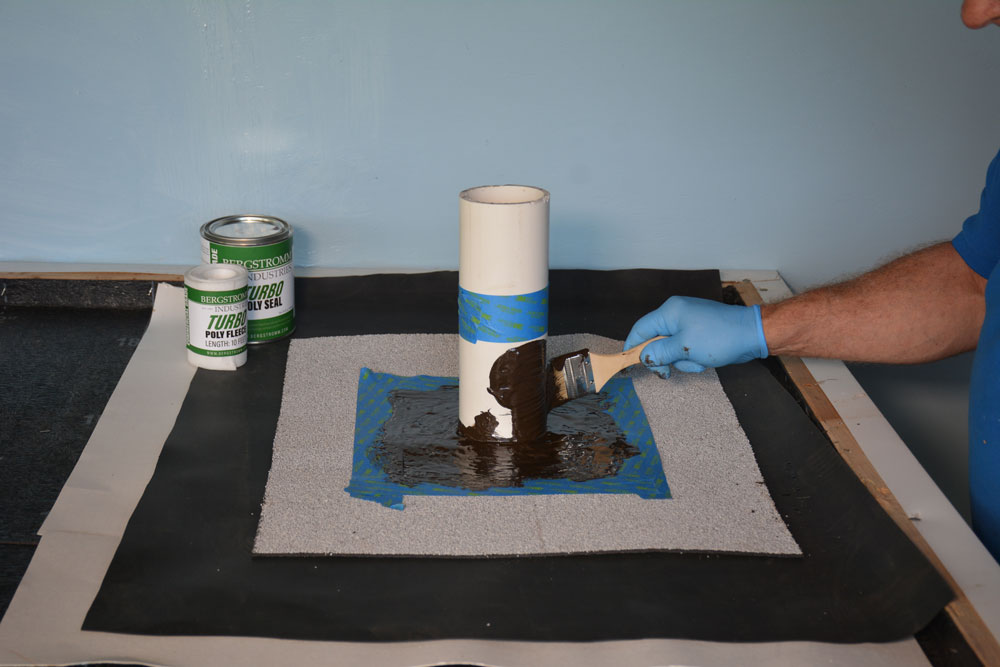
Chimney Leak Repair
Turbo Poly Seal is the ultimate solution for chimney leak repair and other roof leak issues. Its specially formulated combination of polyurethane and bituminous resins ensures outstanding adhesion on most surfaces.
It’s important to note that Turbo Poly Seal is incompatible with EPDM Rubber. To apply Turbo Poly Seal, brush the resin onto a clean surface, embed the polyester fleece into the polyurethane, and apply an additional coat of resin. This straightforward process is easy for anyone to follow.
Remember, regular maintenance is crucial for every building’s roof. Whether it’s chimney flashing, drains, skylights, or any other source of leaks, Turbo Poly Seal is the ideal solution for effectively fixing those problems.
Skylight and EPDM Rubber Roofs
Introducing Super Silicone Seal – the ultimate solution for repairing skylights and EPDM rubber roofs. With Super Silicone Seal, you can easily tackle any leak problems your roof may encounter. Super Silicone Seal is the go-to choice for comprehensive roof maintenance from flashing to drains, skylights to chimneys.
Unlike other sealants, Super Silicone Seal offers superior durability and flexibility, making it perfect for EPDM rubber roofs. Its advanced composition allows for easy application, ensuring a hassle-free experience. The kit includes silica resin and polyester fleece, which are applied using a brush onto a clean surface. The fleece is then embedded in the silicone, with an additional coat of silicone applied for added protection.
Don’t let roof leaks disrupt your peace of mind. Choose Super Silicone Seal and experience the best in roof leak repair sealants. Order your kit today and safeguard your skylights and EPDM rubber roofs effectively.
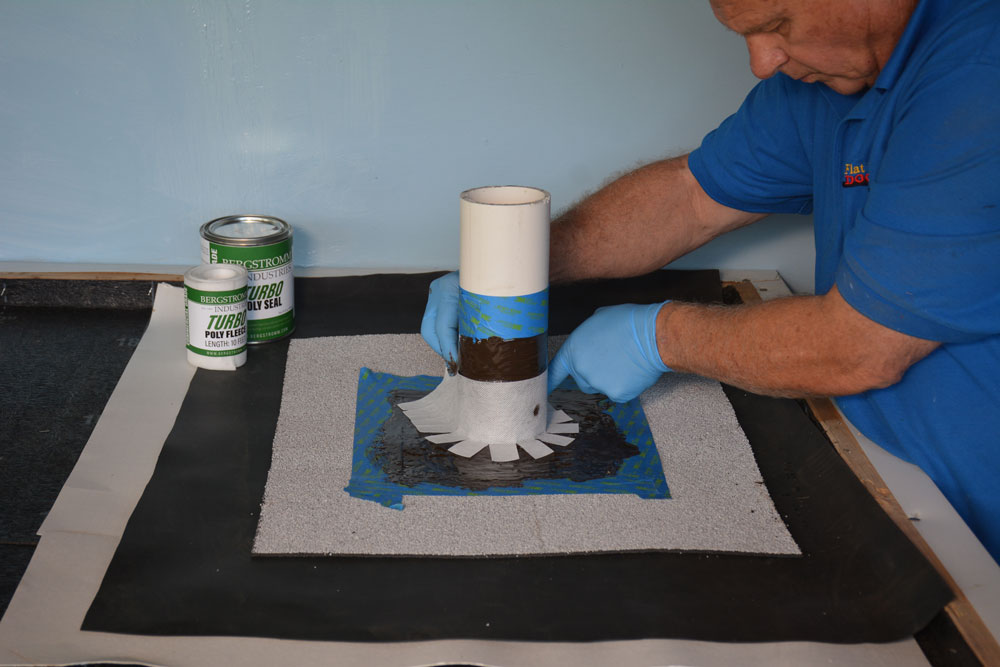
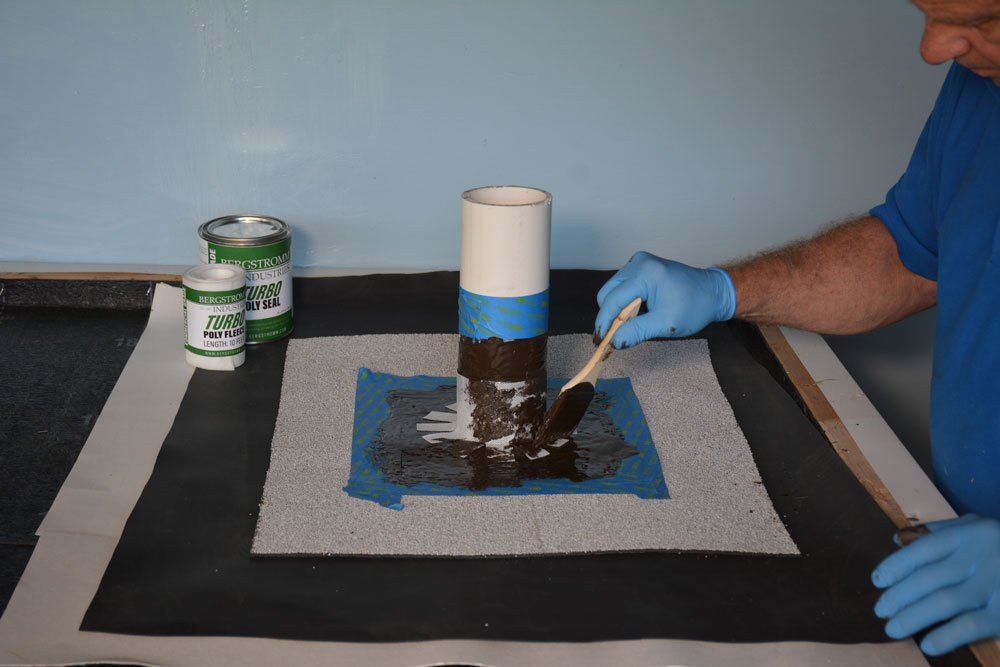
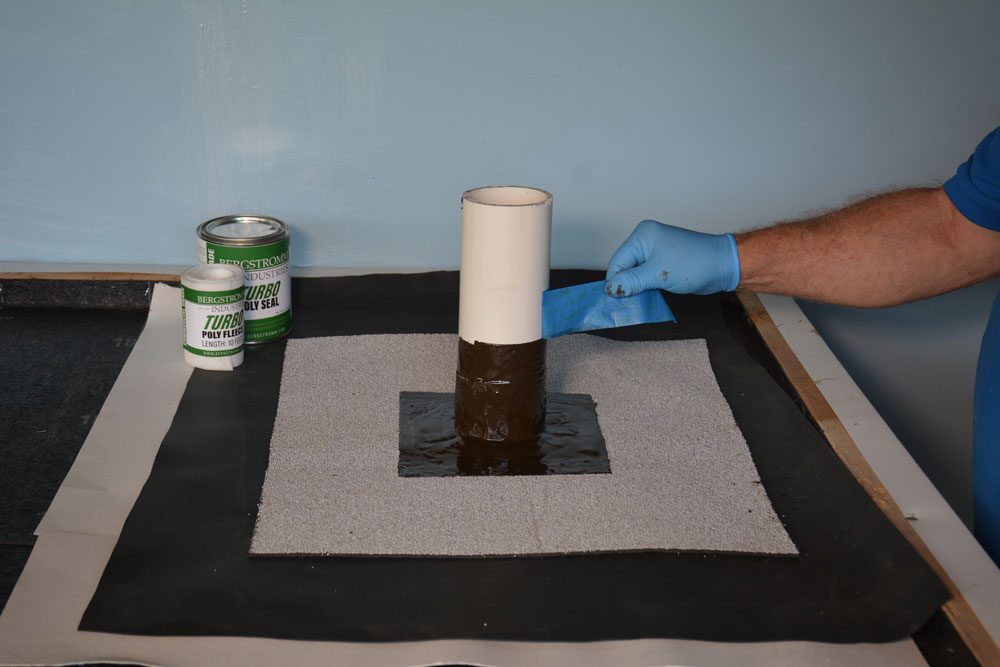
How to patch a Leaky Torch-Down rubber roof – Roll roofing patch #roofinginnovation #construction
Everypne is Coating Roofs for the wrong reason
From Zero to Pro: How We Train Your Guys to Install Torch Down Roofing
Why not Coat Metal Roofs, SHOCKING damage done by Acrylic Coating
DIY Roof leak repair around vent Pipe -Turbo Poly Seal #roofinginnovation #diy #roofingmaterial
Flashing around vent pipe Roof Leak Repair – Turbo Poly Seal
Roof leak around Vent Pipe – Turbo Poly Seal
Roof leak Repair Rubber Roof Seam – Turbo Poly Seal #roofinginnovation #construction
Cheapest Easiest Rubber Roof For Mobile Home with Peel and Stick DIY
Old Lady's Skylights/ Vents leaking on a Metal Roof – we drove 3 hours to FIX it for FREE
Bad Shingles on a Mobile Home or Trailer Roof Leak Repair
DIY Truck Camper Roof Seal: Never Leak Again
Mobile Home Roof Leak Repair – transition from Carport/room to main roof
We helped a random guy fix his mobile home roof #mobilehomes
Mobile Home Roof Leak Repair #mobilehomes
My wife an I helped a random person stopping leaks on his Mobile Home Roof – see the results
Metal Roof Valley Leak Repair #diy #flatroofing
Why not coat a metal roof #diy #roofmaintenance #roofrepair


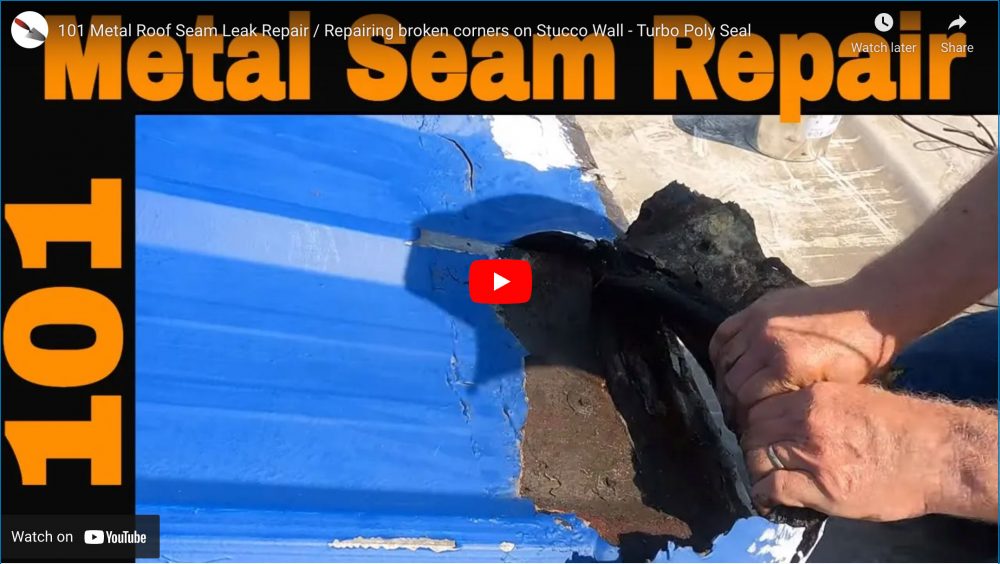
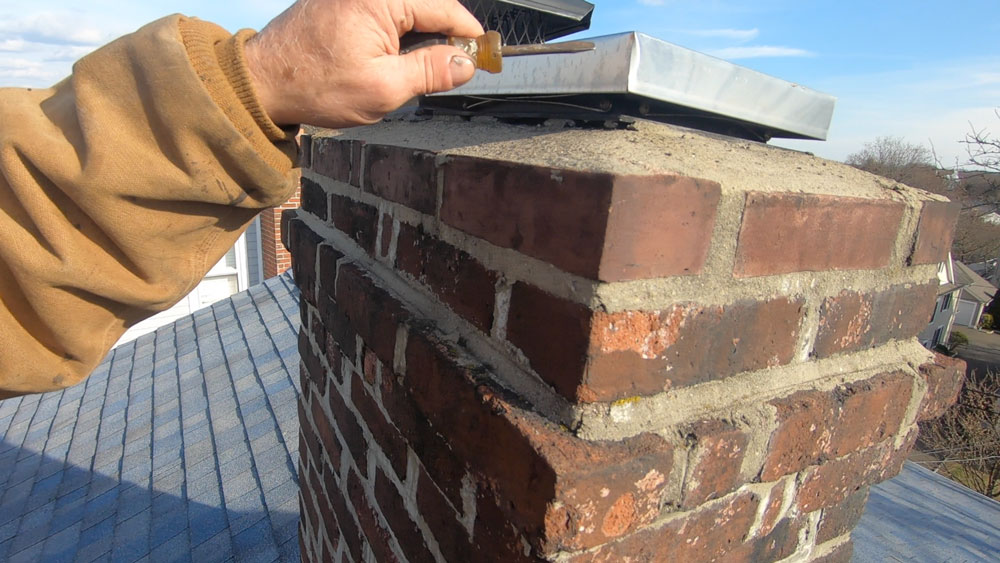
Do you sell in Canada? Is the product going to perform in the cold weather? Thanks. Li
sorry not yet
Do you sell in Canada yet?
Sorry, we don’t sell in Canada yet.
Yes, Turbo Poly Seal performs well in extreme temperatures.
Sorry, we do not sell in Canada yet. We still have to get approved by Customs.
Yes, Turbo Poly Seal performs well in cold climates
Hello Naas,
It’s been a couple years and I’m wondering if any progress has been made with customs to get permission to sell it to Canadians yet?
Or is there another way or outlet that carries it?
Could there be anything else comparable that I could use?
Thank you, Cheryl
Wondering if we can purchase this in the colour gray?
It only comes in brown
Definitely needs to come in different colors or make it tintable.
We working on it
I believe they say you can paint with a oil base paint after 24hrs to help protect from UV rays anyhow. so you then can change the color.
even latex paint can be used
I live in the American Southwest, El Paso, Texas, how will this product hold up to the scorching heat of the Desert? If I can get five years between resealing of the roof fixtures and skylights I’ll be happy.
Hi
After applying the Turbo Poly Seal I recommend you coat it with Silver coating.
That way you are sure that it is protected against ultraviolet rays.
How do you buy the silver coating.which product is i
The silver coating is Aluminum Asphalt that can be purchased at Home Depot or any roofing supply house.
How long to dry after 2 coats – was going to paint silver over, but still cakey – thanks
it can rain approximately 20 min after coating but it takes 24 hours to cure
Hi. Great Q&A section. How long before rain can hit it after application?
Turbo Poly Seal – 15 min
Super Silicone Seal – 1 hour
Hi John. You should get 5 years easy. What I recommend in severe ultraviolet exposures is to paint the Turbo Poly seal with silver coating or any other oil-based paint. But, before painting it, paint an extra coat and wait a day or two before painting it with protective paint.
how many square feet does 1 gallon cover?
can this be used directly on top of a concrete chimney crown? what surface prep is required?
It all depends on the type of surface, and thickness you do. I guess roughly 10 – 15 sq ft
Yes, it is perfect to apply it directly to any surface accept EPDM rubber. It works perfect on cement surfaces like chimney caps. There is no prep necessary.
can you give me an examples of epdm rubber? is rubberized wet patch epdm? are rubber boots on vent pipes epdm? thanks
EPDM is a black synthetic rubber that is the same they use for innertubes on car tires. I used the Turbo Poly Seal over a roof boot that is made from EPDM but made the transition from the pipe to the roof itself or the flashing.
What colors does Turbo poly Seal come in?
It only comes in a brown color.
Can you ship to Panama?
If not, do you know if Turbo Poly Seal can is safe for airfreight?
Not at this present time. We still have to register with customs. I don’t know of a similar product that can perform like Turbo Poly Seal.
Sorry
dose the sealant come in white color ?
No, only in Brown. But you could paint over the Turbo Poly seal.
What kind of paint can be used?
Any oil-based or urethane-based paint
do you have a retail store in your plant that I could visit to pick up my items and chat to be sure I understand how to successfully use your product?
Unfortunately, we only sell online. Sorry about that.
Hi, do you ship to Puerto Rico?
Sorry, I don’t think we can ship to Puerto Rico
Can I use a product called Permakote (Nationwide Coating) as a top coat for the roof after I have installed Poly Turbo Seal where needed? It is a white roof coating used a lot here in Florida. The metal roof has had a few bad patch jobs and has a few leaks. Just bought the building so I want to start on the roof first.
Yes you can
Can it also be used in metal poles, and Can it stop rust? What is the outside temperature range to apply it.
It is always to prepare the surface. Rust is like dirt. The Turbo Poly Seal will bond to the rust but the rust will flake away eventually.
Rust is duo to Oxygen and moist. So anytime you cost metal with any type of coating, it is likely to prevent rust. In this case, yes, Turbo Poly Seal will prevent rust.
What is the application temperature range?
I have a metal roof and not sure if it would be too hot to apply Turbo Seal during the afternoon, if that is an issue.
Thank you
You can apply it at any temperature that you can work in.
I have not seen or heard of any problems as far as temperatures.
Can i spray paint turbo poly or just paint it.
What type of paint do i have to us. You still do not sell in Canada.
I want to fix a metal roof , which product is better. Turbo or the super silicon .
Thanks Ewen
Only brush or roll. It is to thick to spray
do sell poly seal in 5 gallon if yes how do I get 2 5 gallon bucket Greg
Hi Greg. We don’t sell in 5 gal pails. The price would be the same whether you get it in Gallons or 5 gal pails. We found that it is best to use Turbo Poly Seal from gallons instead from 5 gal pails. The reason is once the container is opened, you are forced to use it it up what’s in the container. There is but a few days shelf life after opening the container. So using 1 gallon at a time allows you to pace the project better.
Can this be used over a product called Flex Seal?
Yes it can Flex Seal us a Urethane based Silicone and Turbo Poly Seal has Urethane in it as well
Hi, I have a metal roof with a pitch to a flat metal roof with cracks where I had rolled out the silver coating over old tar repairs. Can I use the turbo poly seal right on top of the old repairs, or should I get down to the metal and wire brush clean before use?
You can go over everything without removing the old
Are you associated with Re-New and Re-Systems Group?
nope
Hi, after doing a repair with the poly turbo seal on a flat metal roof, will you recommend using fibered aluminum coating or non-fibered aluminum coating? Any benefit of using one or the other? I am in South Florida where temperature are very hot and I believe the fibered have less elasticity on temperature changes,but definitely will like your opinion on this.
Anyone is fine. Nonfibered aluminum Asphalt coating is for spray guns
Hi!
On September 13th, in replying to a comment, you mentioned “… once the container is opened, you are forced to use up what’s in the container. There is but a few days shelf life after opening the container. ”
I just received the turbo poly seal kit with two 29 oz cans. There is no mention of limited shelflife after opening a container; the only thing the can mentions, is to
” tightly seal all partially used containers.”
Aside from closing the cans immediately after using, what things can be done to maximize the shelf life of containers that have been already been opened once? By “a few days” I’m guessing you were saying that once a can is opened, it must be used within three days. Is that a fair assumption?
What is the shelf life on unopened/unused containers of Turbo Poly Seal?
Thank you.
Michael
Hi Michael
I’ll try to explain it better this time. Like any paint, Turbo Poly Seal is a combination of urethane and bituminous resins. Urethane cures when in contact with moisture. You will notice that most of the time the cans are overfilled, almost to the brim. The reason is to have as little air in the can when shipped to provide a longer shelf life. When you close the lid after using some of the content, as in any paint, you are trapping more air and moist in the can. This will cure a layer of the content in the can, but the layer will become the seal between the trapped air and the Turbo Poly Seal. I have used Turbo Poly Seal a month after opening the can but had to remove that fleece that forms on the top.
There is no telling how long a shelf life you can expect. Sometimes the air is more humid and some times less. The reason I said to use all of the product in the can once opened, is to avoid people complaining. It is impossible to expect everyone to use common sense, some just don’t have it. Common sense comes with experience in a certain field.
I really appreciate you bringing attention to this, I’ll make sure the labels will instructions include this situation as well.
Thank you for your excellent explanation Naasfer!
My favorite wood treatment — Minwax Helmsman Spar Urethane — also forms a hard cured layer on top in between uses. I now keep it in a glass jar to keep a better airtight seal. I don’t mind removing the film at each new use of the urethane — I always considered it part of the deal. I would not complain about something like that and it’s just as well that every DIYer knows what to expect and the many possible variables that come into play. It’s always great, and a real pleasure, to be enlightened by a true expert in any particular field. Thanks again!!
Thanks for the compliment. Sometimes I am so tired, that I don’t spend enough time to explain things, but you are an encouragement to me
TAMP AND SEAL LID REAL GOOD…TURN UPSIDE DOWN TO STORE IN DRY, TEMPERATE ENVIRONMENT…WORKS WITH ANY CANNED GOO OR SPRAY PAINT. WILL ADD A GOOD YEAR. YOUR WELCOME, MAMA KAY
Hi Michael
I am reading through the post this morning and noticed that I have never answered your questions. Sorry about that.
Turbo Poly Seal is a combination of Urethane and Bituminous resins. Bitumen takes time to dry because of the petroleum in it has to evaporate. On the other hand Urethane cures because of humidity. When it comes in contact with moist then it starts curing. That is why when we fill the containers is to leave as little air as possible in it to limit the amount of moist trapped in the can at the time of shipping. Once you open the can and use part of the material, you then will trap air in the can after closing it. This happens with paints, urethane, and other paint products you buy at Home Depot or other stores.
Can A product like bloxygen help extend shelf life?
It is moist and air that is the activator. I don’t know the product you are referring too
How long is the expected out door life on a repair on a chimney flashing repair, untill you need to add another application of turbo seal? Also how big of a gap would you recommend that turbo seal can seal over properly?
Life expectancy varies from place to place. But I think between 10 and 15 years.
To get better results, I normally fill the gaps with a urethane caulking. But I have made transitions over 2 inc gaps already.
Once turbo seal is applied and has dried. what are the steps and procedures if a repair needs to be made on the flashing etc, how is turbo poly seal removed?
I hope you never have to remove Turbo Poly Seal. It sticks pretty well to metal and everything else. Several times I had to throw away the paint mixer that I used to stirr up a 5 gal bucket after it dried up. Lately, I clean the blades very well so the Turbo poly seal would not harden on it.
I don’t know the answer to that.
I have a “lean to” carport that was not flashed but was “sealed” with silicone (something called ‘through the roof’, I believe). I use the term “sealed” very loosely because it leaks like a sieve. Should I remove the old silicone before applying the Poly Seal?
Hey Bob
Yes, you have to remove the silicone. Turbo Poly Seal will not adhere to silicone. The easiest way to go about it is to use an angle grinder with a hardwire bristle cup and grind the silicone off.
Preparation is the key to ensure a leak-proof transition. Make sure to use either lacquer thinners or acetone that you can buy at Home Depot to remove the thin film left behind from the silicone. Use a rag and thinners and scrub it hard to get it clean.
I am sorry that you have to do this over again.
Good Luck
I have 25 linear feet of seam to do. Will the two quart kit be enough to complete that?
One more question Naasfer… I have about 25 linear feet of seam to cover. Will the two quart kit be enough to complete that?
Yes, it should be enough. The Turbo Poly Seal Kit comes with a 25 roll of fleece. What I suggest is to cut the fleece in half lengthwise. That way you will have enough fleece to do the job. As long as there is about an inch of fleece on either side of the seam
Hello sir, greetings from Northern Idaho! I am excited to use your product and most all questions have been answered here and on your great YouTube videos. It is an early, bitter cold winter here so far and just bought a home with a metal roof leak. I understand clearly all the prep work and application of Turbo. All I want to know is can I apply this product in below freezing temperatures and it will cure or dry still?
Hi Ryan
Congratulations on the purchase of your new home. I have applied Turbo Poly Seal at temperatures around 20 degrees Fahrenheit and had no problem with it. Yes, it will cure because of humidity. Urethane cures fast when it comes in contact with moist.
Also, it can rain 20 after applying the sealant and the rain will not harm it.
Hello,
I will be using the turbo poly seal to repair a cement chimney crown and the flashing on my brick chimney. I will also be treating the brick with a sealer(Seal Krete) . Should I apply the turbo poly seal before or after sealing the brick or does it not matter?
Hi Jared
Thanks for all the images you shared about the chimney. After reviewing the images, I concluded that it was not necessary to use any sealant on the face of the chimney. Turbo Poly seal is the right thing to use for the chimney cap and the flashing.
Send me pics after you did the chimney please.
Hi,
Do you ship to Europe?
Thanks, Chris
not yet
It says this product “should last 10-15 years depending on thickness of application” my first question involves uv exposure, is this 10-15 years when coated with a uv protector like karnak silver, or is that 10-15 years with nothing covering the turbo poly seal? Also if we, as a company are going to charge a company or homeowner to apply your product they are going to want to know whats the warranty? do you have any guarantees/warranty’s on your product
We can never give any guarantees since we are not in control of the process. It is like all the warrantees on the Silicone Caulkings that comes woth a 50 year warrantee. It makes no sence. That is being dishonest and people normally don’t give that any creedit.
i’m reusing a steel roof on a metal carport frame and now my hole spacing is off can i patch the old screw holes with this product or do you know how i should go about this? would it be best to fill in the old holes with panhead screws first or can this handle that kind of void as is? also how long do you estimate it will last?
Thanks,
Matt
Sorry for the late reply. You don’t need to fill the screw holes. Just cut a small piece of the Polyester fleece and cover the hole with that. make sure to use a steel brush on a drill or grinder to clean the surface.
Question : Will this product repair roof leaks on steel shipping containers? Do you have any how to videos for this type of repair?
Yes, you can use Turbo Poly Seal or Super Silicone seal. Here is a video my wife did on a shipping container with Super Silicone Seal.
https://www.youtube.com/watch?v=aElDansGYuU
My husband and I built an earth sheltered home in northwest Ohio using Nudura insulated concrete forms and Insuldeck forms in 2002. Now in 2020 I have leak in my kitchen where the steel I-beam that holds up the second floor of our home and the ICF forms intercept.
1. Can Turbo Seal be used inside to stop a leak
2. Do I need to dig down on the outside to find the leak – this would be a huge undertaking due to the amount of soil on the roof and then actually finding the leak since we know how water finds its’ easiest path and searching for the actual leak is like finding a needle in the haystack.
3. Does Turbo Seal adhere to a wet area.
Thank you
Leah
Ps I’ll give you our website just know that it has not been updated for many years…it does provide som important information though
1. You can never stop a leak from the inside except for steel where you can weld it. But to stop water coming through concrete cracks is almost impossible to do that from the inside.
2. Turbo Poly Seal does not stick wet surfaces.
3. If you send some pics to my phone number I might be able to help you better to come up with an idea as how to deal with this problem. Pictures from the outside to see what your house looks like and from the inside to see the concrete.
Thank you I will get some photos for better ideas.
My husband and I built an earth sheltered home in northwest Ohio using Nudura insulated concrete forms and Insuldeck forms in 2002. Now in 2020 I have leak in my kitchen where the steel I-beam that holds up the second floor of our home and the ICF forms intercept.
1. Can Turbo Seal be used inside to stop a leak
2. Do I need to dig down on the outside to find the leak – this would be a huge undertaking due to the amount of soil on the roof and then actually finding the leak since we know how water finds its’ easiest path and searching for the actual leak is like finding a needle in the haystack.
3. Does Turbo Seal adhere to a wet area.
Thank you
Leah
Hi there, I have to fix some leak on my barn roof. Weather being kind of wet lately, how dry have to be the surfaces before applying Turbo Poly ? Also the roof is mostly in metal but connect to a wooden one, do I have to remove all the rotten wood part before applying or I can just cover up ?
Hast to be dry. Yes you can go over.
I just purchased the half gallon of poly seal. After reading the safety data sheet I noticed there wasn’t any instructions on how to clean up equipment or how long it takes for poly seal to cure. It also says to follow the instructions on the container. There is no instructions on the container. In fact there is no label at all.
Sorry to hear that. I am not sure why there was no label on the container. You use a disposable brush to apply the Turbo and if you have to clean something, you can use Laquer Thinners
Hi there ! Do you have it in quarts available ?
We used to carry it, but it cost us more in packaging than we would make on it so we had to go to 1/2 gallons
I came across your product on YouTube. Watched a few videos and saw the same issues I’ve been experiencing. Bought a building with a metal roof. Roof has been coated twice with mop on aluminum coating. Leaks appeared to be coming from places that shouldn’t be leaking. I ordered the product and once it arrived i got to work.
Followed the video instructions and exposed the metal on all seams including the ridge cap. Once the coating was removed I discovered most of my issue was in the ridge cap.
I coated all seams with Turbo Poly Seal and got rain for the next 3 days. Not a drop of water to be found.
100%would recommended this product and will use again.
Hi,
I have a large metal roof on an outbuilding with about a dozen or so leaking screws. Can I use this just as the poly coating or would you recommend doing the sheets as well? The screws were put in the wrong place and the only way to do it right would be to completely replace the roof, which I’m not willing to do. I’d like to coat the screw heads with this poly. What is your thought?
Yes, no need to replace the panels. Just give a quick brush with a wire brush and dab every screw with the turbo Poly Seal. You can also dab the holes that were left by screws that were removed and close them up with the Turbo Poly Sea. You might not close the screw holes completely the 1st time around but may have to dab it a second time. Also, if the holes are too big to be sealed with dabbing, then cut a small piece of the fleece and cover the holes that way.
Hello,
All around my chimney i see small tiny cracks in the mortar. Can i apply the turbo poly sealant to the mortar?
If the cracks are on the sidewalls of the chimney between the bricks or stone, I suggest using Alex Plus Clear caulking and smear it into the cracks with your finger. Turbo Poly Seal will; be good for the crown on top of the chimney and also where the flashing meets the chimney at the bottom. The transition between the metal and the mortar
I have a sunroom with a white painted sloped aluminum roof that has been caulked between each of the panels. Over time the caulk has degraded and the roof now leaks. Three questions:
1. Would Turbo Poly Seal be the correct product to address the leaks?
2. I’m planning on removing/scraping the caulk where possible, but does all of the caulk have to be removed prior to applying the sealant?
3. Any suggestions on a solvent to clean the surface prior to applying the sealant?
The thing that concerns me is the “White Paint”. If you put any sealant over that paint it is as good as the paint itself. The paint can peel.
If you feel that the paint is adhering very well, then I suggest Super Silicone Seal instead. It is white and more flexible than Turbo Poly Seal.
You don’t need to remove all the caulking
A steel brush is good enough to prep the surface.
Don’t use solvents because it could lift the paint or make it weak.
thanks
Name : Martin larret from Miami
Question : Hello Nass
I have a glass and aluminum roof with leaks.
I am planning to seal the joints (Glass-metal) with the Turbo and fiberglass.
May I paint with the Turbo the rest of the glass pieces?
I prefer to paint the glass because the sun is very strong here, and my sunroof space is getting very hot inside…
Thank you
On the product page we recommend that you don’t use Turbo Poly Seal on glass or plexiglass. The best product to make the transition from metal to glass is Super Silicone Seal. Super Silicone Seal will adhere to glass much better with less preparations.
Hi Naas,
Any updates on shipping to Canada. I have a metal roof that needs repair desperately before winter comes. Now with covid I can’t drive across the border to a shipping depot and bring it over myself.
Thanks!
Hey Alex, not sure yet. We have to get with customs and HazMat people to pass some test and questions
Can you us any thinners to extend pot life? (MEK,Toulene)
Turbo has some Toulene in it, but will that extend the pot life by adding it to it, I don’t know.
Will the Turbo stick to stucco well? I’m looking to attach flashing to stucco and this looks very promising. Thanks
Yes it will stick to cement, brick and concrete
Hi
Do you ship to Finland? Can this tolerate extremely cold environment such as minus 30 degrees?
nope, only in the USA
Can this be used for repairs of a spray foam roof? Will it stick to the top coating? And would it stick to tar repairs or do they need to be removed? Thanks in advance.
Hi, any concerns with applying this product in cold temps? I live in Vermont and have some roof repairs to do but cold temps are here for the foreseeable future. Thanks.
These products can be applied in any temperatures. They are not water soluble.
Hello. I’ve hot a gap about an inch wide between my metal roof and the metal chimney. Previous owner did an awful job sealing it.
Will turbo poly seal be able to seal this gap, or do I need to try and use something else to fill the gap before using turbo poly seal? If I need to use something else to fill the gap first, what should I use?
Thank you!
Sorry for the late response. I must have overlooked your Question. It is possible to use the Turbo Poly Seal with the fleece to breach the gap off appro. 1 inch. I suggest applying 1 coat with fleece, then come back and do a second run with fleece. That will be super strong.Then after it has cured, apply 1 coat of Silver Coat protection. That way the UV’s won’t harm it.
Sorry, not yet
Good day Mr. Naasfer
Hope all is well.
How do I repair the leak from the camel coping
Where it flashing the joint between the camel coping to vertical down to the flat roof.
What is the best way to make the old flashing smith so I can apply the poly seal.
Best regards
Wayne
Looked through the comments but I didn’t see anything about copper gutter repair here. I have cracks in one of my copper gutters at the bottom of the trough–I know the usual repair is to solder(?) a new piece of copper sheeting to cover. Might it also work to use Poly Seal? I understand that the problem with many sealants is that they don’t expand and contract along with the copper. What about Poly Seal? Appreciate your help.
The screws on my metal flat roof are rusting all over. Can Turbo Poly Seal be used to prevent the rust?
Turbo poly seal & fleece we can get it in australia or not.
Can you apply this to eps foam? For example I have icf wall to roof sheathing transition I would like to waterproof